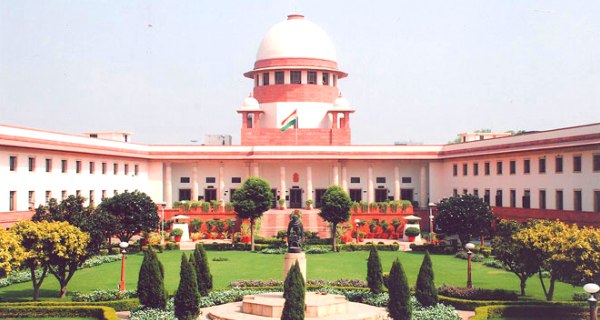1,200 Fast Track Courts In India But 600,000 Cases Still Pending

| Highlights *Bihar has the highest number of fast track courts but also the second highest number of pending cases * Courts in Orissa, Uttar Pradesh and Tamil Nadu are the most efficient in delivering justice * While 3.89 million cases have been transferred to fast track courts, they have disposed of only 3.29 million cases – a clearance rate of 84% |
There has been a rising clamour for fast track courts in India. Such courts, it is felt, will address the general backlog of cases as well as respond to heinous crimes more effectively. What does the track record for fast track courts show? And are fast track courts the near panacea they are made out to be? IndiaSpend’s Prachi Salve looks at the data on fast track courts in India, which have been in existence since 2001.
Fast Track Courts
Fast track courts were set up for expeditious disposal of long-pending cases and cases involving under trial prisoners with an initial tenure of five years. The scheme was supposed to end in 2005 but has been extended beyond 2012. The term of the fast track court scheme was extended after the Supreme Court observed that they should not be disbanded suddenly and directed the Union of India to continue the courts. The total number of fast track courts in India, until 2011, is 1,192. The Ministry of Law and Justice has sanctioned Rs 502.90 crore as a special upgradation grant for fast track courts since 2005.
Table 1: Allocations For Fast Track Courts
| Year | Grant released (Rs. Cr) |
| 2005-06 | 100.00 |
| 2006-07 | 100.00 |
| 2007-08 | 57.2 |
| 2008-09 | 54.56 |
| 2009-10 | 56-13 |
| 2010-11 | 73.13 |
Source: Department of Justice
Bihar and Uttar Pradesh have the highest number of fast track courts with 179 and 153 courts, respectively.
Table 2: Fast Track Court Ranking
| State | Number of FTCs |
Top 5 | |
| Bihar | 179 |
| U.P | 153 |
| West Bengal | 109 |
| Andhra Pradesh | 108 |
Bottom 5 | |
| Manipur | 2 |
| Nagaland | 2 |
| Meghalaya | 3 |
| Mizoram | 3 |
| Tripura | 3 |
| Total | 1,192 |
Source Rajya Sabha
Let us now look at the cases handled by the fast track courts across the country. While 3.89 million cases have been transferred from various courts to fast track courts across the country, they have disposed of 3.29 million cases – a clearance rate (calculated by dividing the transferred cases and the cases disposed) of 84%. For comparison, as per a statement by former Law Minister Salman Khurshid in the Lok Sabha last year, there were over 63,000 cases pending in the Supreme Court (as on July 31, 2012) and 4.3 million cases in various High Courts (as of December 31, 2011).
Table 3: Orissa, U.P Fast Track Courts Most Efficient
| State | Transferred cases | Disposed cases | Pending cases | Clearance rate |
Top 5 | ||||
| Tripura | 5,812 | 5,591 | 221 | 96 |
| Manipur | 3,059 | 2,861 | 198 | 94 |
| Orissa | 66,199 | 60,441 | 5758 | 91 |
| U.P | 98,797 | 89,791 | 9006 | 91 |
| Tamil Nadu | 4,11,957 | 3,71,336 | 40,621 | 90 |
Bottom 5 | ||||
| Arunachal Pradesh | 4,162 | 1,660 | 2,502 | 40 |
| Bihar | 2,39,278 | 1,59,105 | 80,173 | 66 |
| Assam | 72,191 | 55,811 | 16,380 | 77 |
| West Bengal | 1,46,083 | 1,13,903 | 32,180 | 78 |
| Goa | 5096 | 4017 | 1079 | 79 |
| Total | 3,898,598 | 3,292,785 | 605,813 | 84 |
Source: Rajya Sabha
Funding wise, the states of Andhra Pradesh, Karnataka and Haryana have seen significant increase in central assistance through the FTC scheme. And states like Tamil Nadu and Punjab have actually seen a decline in central assistance over the years.
Table 4: Central Assistance For Fast Track Courts
| State (In Rs cr) | 2008-09 | 2009-10 | 2010-11 | Difference % |
Top 5 | ||||
| Andhra Pradesh | 1.42 | - | 10.96 | 670 |
| Karnataka | 1.82 | 4.46 | 4.41 | 142 |
| Haryana | 0.38 | 0.76 | 0.67 | 75 |
| Gujarat | 5.80 | - | 7.77 | 34 |
| Manipur | 4.17 | 4.12 | 5.37 | 29 |
Bottom 5 | ||||
| U.P | 11.61 | 11.61 | 10.94 | -6 |
| Chhattisgarh | 1.48 | 1.48 | 1.29 | -13 |
| Jharkhand | 2.49 | 1.96 | 1.92 | -23 |
| Punjab | 0 | 1.63 | 0.81 | -50 |
| Tamil Nadu | 0 | 4.70 | 2.35 | -50 |
| Total | 54.56 | 56.13 | 73.15 | 34% |
Source: Rajya Sabha
So, while Bihar has the highest number of fast track courts (179), it has the second highest number of pending cases and one of the worst clearance rate of only 66%.
Arunachal Pradesh has one of the lowest numbers of fast track courts (3) and the lowest clearance rate of only 40%. In contrast, Manipur has only two fast track courts (partially explained by low population) but it has one of the best clearance rates in the country with 94%, preceded only by Tripura with 96% (this could be due to low number of cases).


